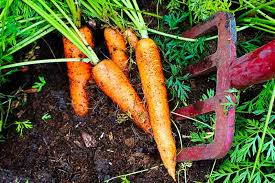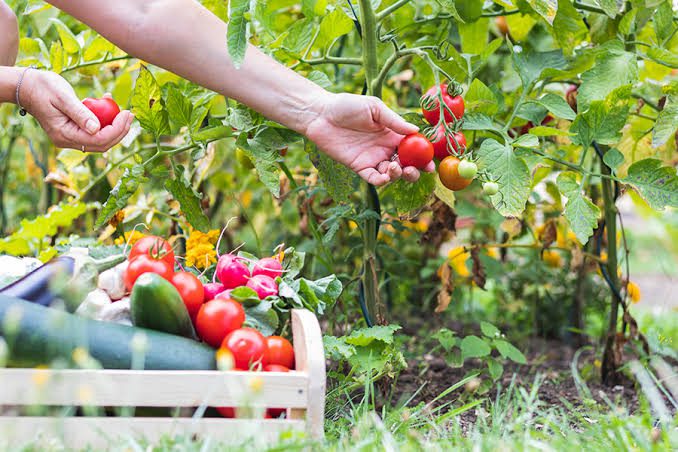How to harvest your crops; Harvesting your crops is a special time for farmers, it means gathering the fruits of your hard work from the fields. Imagine it like picking the ripest apples from a tree after patiently watching them grow. When you harvest, you are reaping what you sowed – the seeds you planted in the soil. It’s like a gift from nature for taking care of the tiny seeds and helping them become big, healthy plants.
As the sun shines brightly in the sky, farmers head to their fields with tools in hand. They carefully cut or pick the mature crops, like golden grains of wheat or plump tomatoes, from the plants. It’s like collecting treasures from the land.
Harvesting is a celebration of nature’s cycle. From the tiny seeds, plants emerge, grow, and finally give us the bounty we see during harvest time. It’s a reminder of the harmony between humans and the earth, a dance where we play our part in the grand symphony of agriculture.
The crops, now detached from their homes on the plants, are collected in baskets or containers. This marks the end of the growing season and the beginning of a new chapter – turning the harvested crops into nourishing food for people around the world.
Picture a field full of smiling farmers, surrounded by heaps of harvested goodness. It’s a joyous moment, knowing that the fields, once bare, are now filled with the results of dedication and hard work. It’s a time when the earth shares its abundance, and farmers, in return, share it with their communities.
Harvesting your crops is not just about gathering food; it’s a symbol of patience, care, and the intimate connection between humans and the land. It’s a story written in the rustling leaves and golden grains, a tale of growth and fruition.
So, as you stand in your field, surrounded by the fruits of your labor, take a moment to appreciate the journey from seed to harvest. It’s a journey filled with lessons from nature, reminding us of the beauty and resilience found in the simplicity of planting and reaping.
Read Also: How to Create a Business Plan for a Farm
How to Harvest Your Crops

Harvesting your crops is an essential part of farming. It’s the time when you gather the fruits of your hard work and ensure a bountiful yield. Follow these simple steps to harvest your crops successfully.
1. Check for Ripeness: Before you start harvesting, make sure your crops are ripe. Ripe fruits and vegetables are usually colorful, have a pleasant aroma, and feel firm to the touch. Different crops have different signs of ripeness, so learn about each one.
2. Choose the Right Time of Day: Harvesting at the right time of day is crucial. Early morning or late evening is often best, as the temperature is cooler, and crops are less stressed. Avoid harvesting in the heat of the day to prevent wilting.
3. Use the Right Tools: Equip yourself with the appropriate tools for harvesting. Sharp scissors or pruning shears are ideal for delicate crops, while a sturdy knife or secateurs may be suitable for others. Make sure your tools are clean to prevent the spread of diseases.
4. Handle with Care: Treat your crops gently to avoid damage. Bruised or injured crops may not store well and can attract pests. Hold fruits or vegetables carefully, and cut or snap them from the plant without squeezing too hard.
5. Follow Crop-Specific Techniques: For leafy greens, cut the outer leaves first, allowing the inner ones to continue growing. Berries are delicate, so pick them by hand, being careful not to crush them. Root vegetables like carrots and potatoes can be gently pulled from the soil.
6. Collect in Baskets or Bins: Use baskets or bins to collect your harvested crops. This prevents them from getting crushed or damaged and makes it easier to transport them from the garden to your storage area.
7. Sort and Clean: Once you’ve harvested your crops, take the time to sort and clean them. Remove any debris, dirt, or damaged parts. This not only improves the appearance but also helps in proper storage.
8. Store Properly: Different crops have different storage requirements. Some fruits and vegetables prefer cool, dark places, while others need refrigeration. Understanding the storage needs of your crops will help prolong their freshness.
9. Enjoy the Fruits of Your Labor: After harvesting and storing your crops, take a moment to appreciate the results of your hard work. Whether you share them with friends and family or savor them yourself, your harvest is a reward for your dedication to farming.
Remember, successful harvesting is not only about the quantity but also the quality of your crops. By following these simple steps, you can ensure a fruitful and satisfying harvest season. Happy harvesting!
Read Also: 8 Health Benefits of Boldo (Peumus boldus)
Benefits of Harvesting Your Crops

Harvesting your crops brings a range of benefits, not just in terms of the quantity of produce but also for your overall farming experience and the environment.
1. Nutrient-Rich Food: Freshly harvested crops are rich in nutrients, providing you and your community with a healthy and diverse source of vitamins, minerals, and antioxidants.
2. Cost Savings: Growing and harvesting your own crops can lead to significant cost savings compared to purchasing produce from a store. This is especially true if you practice sustainable farming methods.
3. Self-Sufficiency: Harvesting your crops contributes to self-sufficiency. You become less reliant on external sources for your food, promoting a sense of independence and resilience.
4. Connection to Nature: Engaging in the harvesting process allows you to connect with nature and the seasons. It fosters an appreciation for the cycles of life, weather patterns, and the environment.
5. Physical Exercise: Harvesting can be a physically demanding activity, providing you with a natural form of exercise. It promotes a healthy lifestyle and helps keep you active.
6. Community Building: Sharing your harvest with neighbors, friends, or local communities can foster a sense of community. It creates opportunities for social interaction and strengthens relationships.
7. Environmental Impact: Growing and harvesting your crops using sustainable practices can have positive effects on the environment. It reduces the carbon footprint associated with food transportation and encourages biodiversity in your local ecosystem.
8. Educational Value: Harvesting is a practical and educational experience. It offers opportunities to learn about plant life cycles, agricultural techniques, and the importance of sustainable farming practices.
9. Financial Opportunities: Depending on the scale of your farming, you may have the chance to sell your surplus harvest. This can provide additional income and contribute to the local economy.
10. Emotional Well-being: Witnessing the fruits of your labor can be emotionally rewarding. The satisfaction of seeing a successful harvest can positively impact your mental well-being and sense of accomplishment.
In summary, the benefits of harvesting extend beyond the tangible yield of crops. They encompass physical health, environmental consciousness, community building, and a deeper connection to the natural world.
Read Also: Who Is Responsible for Explaining Proper Waste Disposal Procedures to Passengers On a Boat?
